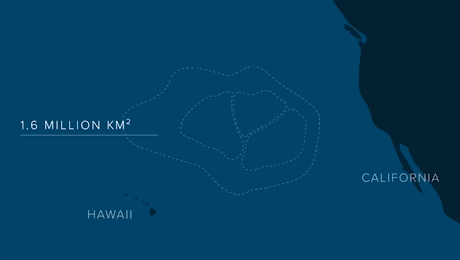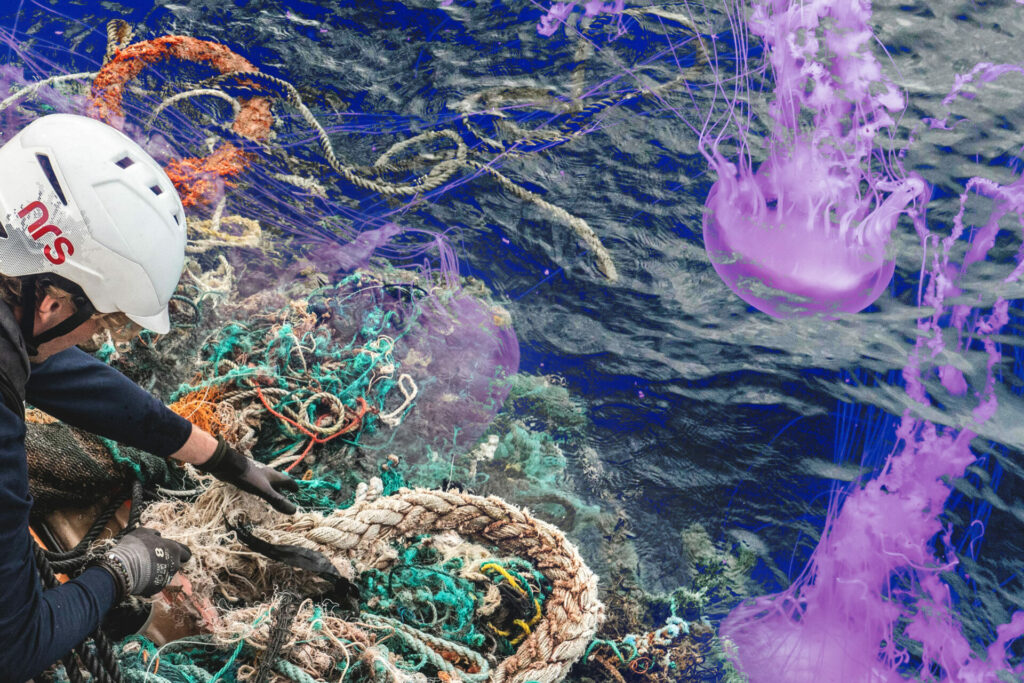Scientists have found that coastal marine species are living and reproducing in the open ocean, on the banks of plastic of the Great Pacific garbage patch.
Dubbed the "seventh continent", the patch contains (at least) 80,000 tonnes of rubbish that floats in the middle of the ocean between California and Hawaii, in an area about three times the size of France.
Jellyfish, worms, sponges and tiny crabs are among the species growing on the plastic continent, possibly invading the local ecosystem. The new study, published in the Nature Ecology & Evolution journal, found that coastal creatures are developing on 70% of the debris in the garbage patch, surpassing the expectations of the team of researchers, Scientific American reports.

The surface of the Great Pacific garbage patch. Credit: Ocean Cleanup Project
Coastal species are interacting with the creatures native to the open ocean in what the scientists say is an unprecedented kind of ecosystem. “We’re essentially creating new communities in the open ocean,” Linsey Haram, lead author of the study and science fellow at the US National Institute of Food and Agriculture, told Scientific American.
A vortex of plastic
Haram explained that the interaction may be dangerous to traditional species, due to increased competition for food and space. The coastal species could even eat their new neighbours and severely disrupt the existing ecosystem.
“We know a lot at this point about entanglement and ingestion and the huge negative impacts that result from that,” Haram told Scientific American, referring to how marine wildlife like turtles swallow plastic and can die as a result.
Scientists aren't sure exactly how coastal creatures ended up on the garbage patch. It is possible they grabbed onto pieces of plastic at the shore and were then carried away through the swirling ocean currents to the garbage patch in the North of the Pacific, CNN reports.

Crew sorting plastic harvested from the Great Pacific garbage patch. Credit: Ocean Cleanup Project
For the study, Haram and 16 other researchers analysed ropes, jugs, crates, fishing nets, bottles and other trash extracted from the garbage patch. There are about 1.8 trillion pieces of plastic in the Great Pacific garbage patch and the swirl of trash is accumulating plastic at a faster rate than nearby waters, according to a 2018 study.
The Great Pacific garbage patch is in fact in a gyre – a type of vortex found at the convergence of major currents. Once there, garbage is trapped in the centre where the water is calm. Plastic stays there and breaks down into tiny pieces, microplastics, under the effects of the sun, waves and marine life.
Most of the debris in the patch comes from fishing activities and about 10% is from the 2011 tsunami in Japan, the Ocean Cleanup Project explains. The charity is focused on plastic pollution in the ocean and conducts clean-up expeditions to the garbage patch.
Related News
- Presence of PFAS observed at several sites in Brussels Region
- Belgians want to force companies to get serious on climate impact, survey reveals
- Stricter EU climate laws: Households will soon pay for CO2 emissions
It is impossible to know just how much debris is in the Great Pacific garbage patch because it is located next to a vortex and it is possible that beneath it the seafloor is also covered in plastic, National Geographic explains.
The mass of trash in the North Pacific is the biggest and most researched garbage patch, but other ones, of various sizes, exist in the South of the Pacific Ocean, the Atlantic Ocean and the Indian Ocean.

